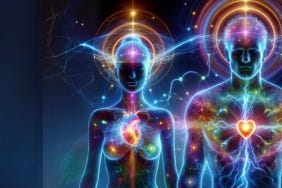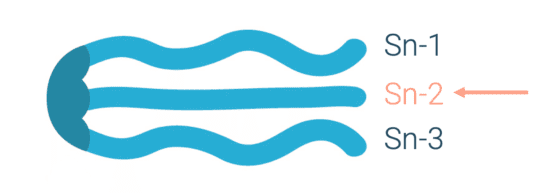Welcome to my Substack !
Biomagnetism Basics
Today I am going to discuss magnetism in simple terms as many people find this aspect of quantum biology the most confusing. Magnetism also relates to electromagnetic radiation, which is very complicated, but today's post is not about nnEMFs, the earth’s magnetic field, or heavy biophysics.
We are going to look at basic concepts such as attraction and repulsion and why this is biologically relevant.
We are also going to look at some magnetic molecules and parts of the body, what they do, and why they are important. This post has daily life applications.
Magnetic Molecules
Water
Mitochondria
Oxygen
DHA
Iron
Water
Magnets can attract or repel each other and this can be very useful in biological systems.
For example, red blood cells have a negative charge (zeta potential) or negative polarity, so does the sulphate and EZ water that line the blood vessels. This repulsion helps keep things ‘spaced out’ in the blood and away from the lining of the blood vessels so that blood flow is efficient.
Molecules can have a positive pole or charge at one end and a negative pole or charge and these are called ‘dipoles’ and water is a dipole, so a magnet and we are 55-75% water so that one way we are a magnetic being that isn’t considered.
Mitochondria
Your mitochondria are magnetic because inside them the electrons flow down the electron transport chain (electric current) and the ATPase (a spinning nano motor) sits in the membrane at 90 degrees to the electron flow. Faraday’s right hand rule says that this electron flow in the presence of a rotating charge will produce magnetism. We have about 40 quadrillion mitochondria ! That’s 15 zeros, that’s a lot of mini-magnets!
Oxygen
Oxygen is paramagnetic which means it is attracted to magnetic fields such as the mitochondria. Inside the mitochondria oxygen combines with electrons and H+ to make metabolic water at Complex 4 (Described in Water 101 post). Thyroid hormones and copper are involved in regulating how much oxygen gets to the mitochondria and when. Oxygen is poisonous as well something we can’t live without, so it has to be regulated. Prof Nick Lane has a whole book on Oxygen biology, called ‘Oxygen’. It’s pretty heavy going so if you are new to quantum biology, its not a good place to start.
Docosahexaenoic acid (DHA)
DHA is a very important omega-3 and omega-3 fatty acids exists in several configurations or positions, SN1, SN2 and SN3. DHA in the SN2 position is what is found in seafood and to a lesser extent in animals. In the SN2 position, the DHA is a flat, planar molecule and the electrons delocalize allowing DHA to act as a semiconductor. This makes a direct electric (dc) current in the body that we need for communication and electrical power. DHA also absorbs UV light and it can turn light into electric current, so it is key for how we use light to run our biology and circadian rhythm.
When DHA is the cell membrane it makes the membrane more hydrophilic (water-loving). This helps the exclusion zone (EZ) or 4th phase or gel water form and expand. The more of this type of water we have the better (See Water post). Professor Michael Crawford is a leading expert on DHA, the brain and marine life if you are interested in learning more.
Our eyes, brain and heart contain the most DHA as well as a huge amount of mitochondria and water. DHA is also paramagnetic so it is attracted to these places in the body. The heart is a giant magnet as it is full of water (dipole), iron (magnetic) and it vortexes the blood in a plunger as it moves it so it actually creates a huge torus field and is our main electro-magnetic biofield . The heart isn’t a pump its hydraulic ram, but that’s for another post.
Iron
Iron, anemia and so called ‘iron deficiency’ is area of medicine and biology where there is a huge amount of misunderstanding and confusion. Iron is the most abundant mineral on the planet, so why would we deficient?
One big reason is most Dr don’t order an iron and copper panel or know how to interpret it and do not understand how many vital roles copper play in the body, from making energy in the mitochondria, making melanin and methylation.
Iron in the form of heme is a bound form of iron found in enzymes and of course hemoglobin in the blood. Hemoglobin is magnetic but it also absorbs red light. A porphyrin ring (heme) around the iron is called the prosthetic group, it’s a sort of ‘cage’ for hemoglobin (Hb) and myoglobin (Mb), as well as other heme enzymes such as peroxidases, catalases, and cytochromes. The final steps for making heme to form hemoglobin happen in the mitochondria.
Unbound or free iron that accumulates in the tissues such as the liver or the mitochondria is the problem and its this unbound iron that is the energy stealer and the disease promoter.
Like oxygen, iron is nasty if there is too much of it in the wrong form (unbound) in the wrong place (tissues and mitochondria). Iron is pro-oxidative as it is inflammatory. This why high ferritin is a marker for inflammation as it tells you that you have iron overload in the tissue and its spilling over into the blood. We all know what happens when iron and air (oxygen) meet, rust forms. So too much iron in the body means it is ‘rusting’ at the biochemical level, which is called oxidative stress.
Ferritin DOES NOT measure your blood iron status!
Ferritin is something some people have heard of as it is quite commonly seen on blood tests and this is NOT measuring iron in your blood. Ferritin is an iron storage protein and it is NOT supposed to be in the blood in high amounts. When ferritin is high or in the blood (over 70 ng/mL) means there is unbound iron overload in the tissues, especially the liver. Iron will also accumulate in the mitochondria and suffocate them. The reference ranges for ferritin are too high and you need a full iron and copper panel to get an insight into your iron status.
Other makers used in iron blood panels are also mis-read and misinterpreted and patients are told they have anemia or iron deficiency when they have iron dysregulation, iron trapped in the tissues and a bioavailable copper deficiency. Giving people iron supplements is the worst thing they can do as now they are even more overloaded with iron which will rob their energy even more!
Iron is meant to be on the move or in a dynamic state in the body, not sitting about in the tissues. I mentioned earlier that thyroid hormones are involved in oxygen regulation, but remember that thyroxine or T4 gets converted to active T3 in the liver. If the liver is overloaded with iron then it can be one cause of hypothyroidism nobody talks about. Both iron and thyroid hormones are regulated by the sun so you still need to go outside to be healthy.
Morley Robbins is an expert in this area and I am very fortunate to be about to record a 4 Part Series on ‘Mineral Mythology & Quantum’ biology where we will go from beginner level to super advanced.
Iron Overload 101
Big food has played a big role here as the fortified food problem started in 1941 when iron was added to grains, then these days its added to all kinds of processed food from protein powders, protein bars, cereals, and drinks. Food and iron supplements literally contain iron fillings or harmful cheap forms of inorganic iron, sometimes up to 9 forms. There are plenty of videos around showing ‘magnetic cereals’ moving in bowls, so this magnetic cereal is not a camera trick.
This problem has gotten worse with Drs, the public and practitioners getting mixed ups over real iron deficiency (rare), bio-available copper deficiency (common) and iron dysregulation (common).
Other factors cause iron dysregulation, such as taking vitamin D supplements for no reason, being magnesium deficient, taking too much zinc which then disrupts copper levels, and ceruloplasmin ( master “multi-copper protein) which further dysregulates iron. All of this dysregulation leads to low energy, bad mitochondria and disease.
Copper Toxicity Mythology
For over 100yrs the importance of copper has been demonstrated and there are numerous examples I could mention. Here are a few
Copper activates oxygen in mitochondria so it can form metabolic water at complex 4 and deactivates harmful oxidants
The tyrosinase enzyme that makes melanin is a copper dependant enzyme
11 copper atoms are needed to make 1 molecule of cholesterol which has numerous functions in the body, including making pregnenolone, our master sex hormone.
Copper enzymes control DNA methylation, along with light and the microbiome. Taking synthetic chemical B-vitamins that are the by product of the petroleum industry is NOT how to fix your methylation or MTHFR concerns.
What about copper and magnetism?
Copper is diamagnetic, which means it has a weak attraction to magnets and repels them when exposed to a magnetic field. Copper is a superb conductor and I use leather-soled shoes with copper rivets as my grounding shoes. Grounding is both and electron-gathering activity as well as a way to connect with the earth’s magnetic field
There is a lot more I can say about magnetism which will come later
Learn About Your Hormones & Mineral Status - Testing & Fixing
I am doing a webinar on Sat May 11th which will go into hormones (men and women), thyroid, leptin, quantum biology, iron, copper and magnesium in more detail. It’s a ‘practical’ webinar with ‘actionable steps’
Use Code: ‘MOM’ For An Early Bird Discount
Thanks
Next FREE Substack Post Will Be Deuterium
Key Copper References, but there are 100s more.
Cartwright & Wintrobe, 1964, “The Question of Copper Deficiency in Man”
Dulout et al, 2004, “Association Between Copper Deficiency and DNA Damage






